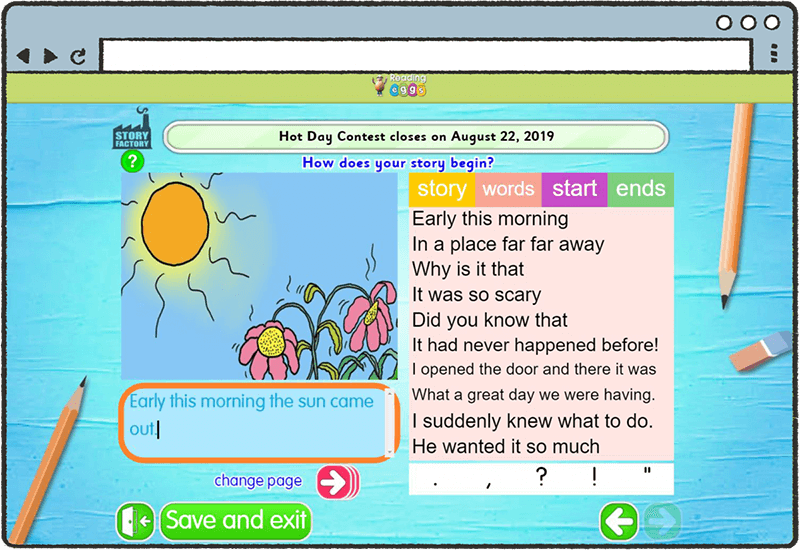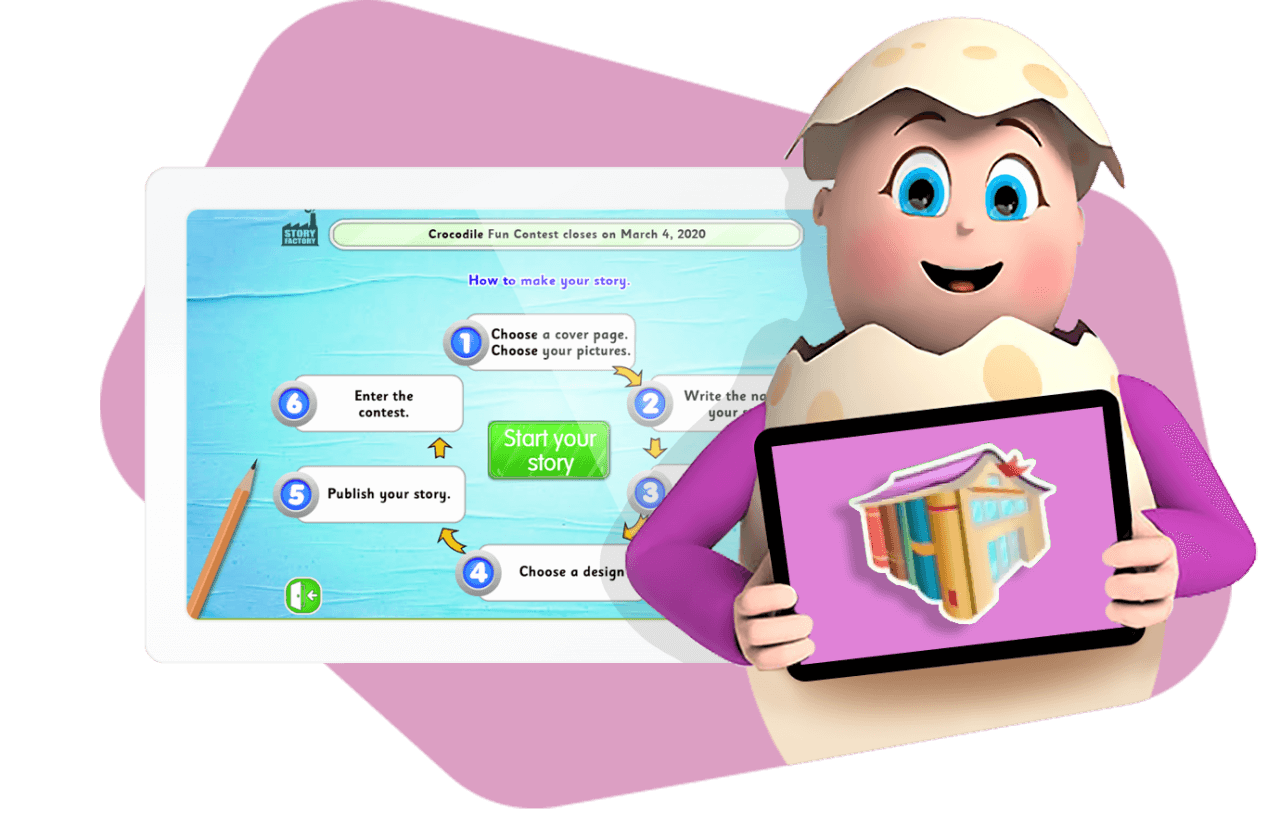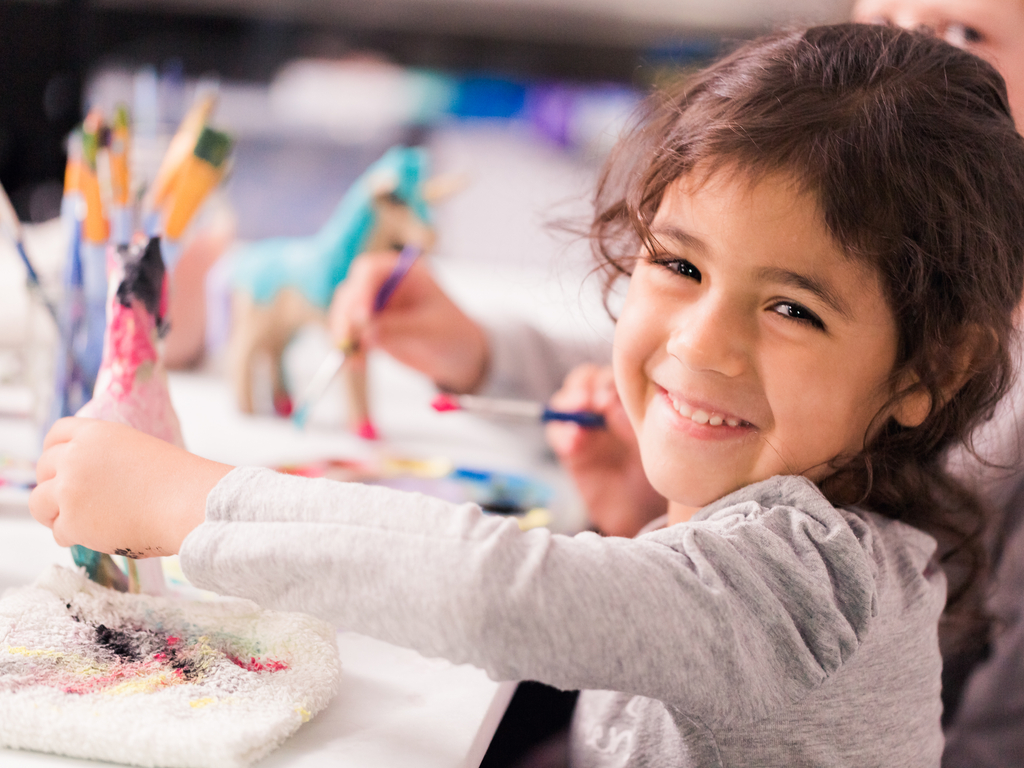Do you have parents desperate to keep their kid’s engaged this summer?
Here are five fun-filled activities to share with them this summer break, complete with teacher tips!
Just copy and print the projects below to send home with your students or send to parents using your parent communication platform. Or simply download the PDF version below.
1. Fact Finder
What it involves
Ask your child to research a topic or issue of their choosing over the week. This might be something linked to current affairs, a musician or animal, an historical event… the choices are only limited by your child’s natural interests.
At the end of the week, they can give you an informal presentation or tutorial on what they’ve researched. Catering to your child’s specific interests encourages natural engagement and gives you the chance to learn something new too!
What it teaches
Your child will learn about the subject they choose to explore as well as:
- Research skills
- Oral presentation and communication skills
- Time management
- Critical thinking
Teacher Tips for parents
- Start by identifying some broad research questions
Give your child a focus. ‘What do we need to know about this topic?’ They’ll begin to see how broad topics can be broken down into different levels of detail.
- Show your child how to find good sources online
Give them some help with search terms. Older children can also be given tips on how to assess the credibility of online sources. Both are indispensable skills in the digital era.
- Show them how to take notes
Provide them with an example of what it looks like to condense and extract important information, then see if they can do the same.
- Schedule a time for them to share the results of their research
Depending on your child’s personality, this might be a simple conversation at the dinner table, or it might be a mini-lesson where they take you through pictures on a laptop and quiz you at the end (kids love to play the teacher!)
2. Story writing

What it involves
Challenge your child to write a story. This can be a short-term (single page) or long-term (one chapter a week) exercise that allows them to explore the creative side of literacy.
What it teaches
- Critical and creative thinking
- Planning skills
- Reading/oral communication
Teacher Tips for Parents
- Encourage your child to plan
Help them find immersion by suggesting they sketch settings and characters and map out their ideas. Engage with them along the way by asking questions and encourage them to provide detail.
- Help them get unstuck
‘I don’t know how to start’ is a common roadblock.
Tell them to write first and edit later, or to start writing from a point that is not the beginning of their story. You can also time a fifteen minute ‘free writing’ session. This builds confidence and reduces the perfectionist anxiety often associated with committing words to paper.
- Have them read to you
Sit down for story-time with them once a week so you can hear what they have produced. Avoid offering too much unsolicited feedback but ask questions instead.
Did you know? Story Factory in Reading Eggs allows your students to create their very own story books with illustrations. Once your student has written a story, you can print it out to create a real book, written by them! They can also use it at home on a separate device, so the writing doesn’t stop during their summer break.

3. Art Exhibition
What it involves
Suggest to your child that they create an artwork or craft piece, perhaps with the added challenge of using readily available home materials. They can show you their work in an exhibition where they talk you through how and why they did it.
What it teaches
- Critical and creative thinking
- Oral communication
- Hands-on creative skills
Teacher Tips for parents
- Encourage your child to plan first
Ask them what they want to achieve, how they want their piece to look, and why.
With older children you can use this conversation to dive into the concepts or thinking they want to express with their artwork.
- Give them space and time
Creative activities work best when you give your child the freedom to explore and see what works.
- Ask thought-provoking questions about their work, such as:
This aspect is really interesting. Why did you choose to do that?’
‘I like how you did this a bit differently. How did you come up with the idea?’
‘What do you want people to think about or feel when they look at it?’
- For the budding and engaged artists
Stage a home ‘gallery’ or have your child write artist statements to go alongside the work.
Give them some help with search terms. Older children can also be given tips on how to assess the credibility of online sources. Both are indispensable skills in the digital era.
- Show them how to take notes
Provide them with an example of what it looks like to condense and extract important information, then see if they can do the same.
- Schedule a time for them to share the results of their research
Depending on your child’s personality, this might be a simple conversation at the dinner table, or it might be a mini-lesson where they take you through pictures on a laptop and quiz you at the end (kids love to play the teacher!)
4. Choreograph a dance
What it involves
You will already know if your child loves to dance. Set them the challenge of choreographing a routine to their choice of song, and then performing it for the family. It’s a great way to keep them active while learning.
What it teaches
- Physical and spatial awareness
- Strategies for fitness and exercise
- Musical awareness: rhythm, tempo, timing etc
- Performance confidence.
Teacher Tips for parents
- Get siblings involved
Dancing is a perfect collaborative activity, particularly if your child can take the lead with a younger sibling and teach them their moves. They’ll learn what it takes to lead and work with others.
- Make it a show
Switch off the lights and turn up the music.
- Have them teach the routine to you
It’s a great way to further their communication skills while upping the level of physical activity.
5. Create a vegetable or herb garden
What it involves
A small windowsill garden is achievable even if you don’t have access to a big outdoor area. Your child can take an active role in planting, maintaining and harvesting fresh food that the whole family can enjoy.
What it teaches
- Responsibility
- Biological understandings
- Self-sufficiency
Teacher Tips for parents
- Have your child do some research first
Find out what plants are best suited to the growing conditions you have available, and what kind of maintenance they require.
- Make watering and care a routine part of the day
It will further the sense of regularity that you are trying to achieve in the rest of their home learning.
- Cook something with the results!
There’s no better way to show your child that their efforts can have tangible, practical results.
Remember, not all learning opportunities have to be explicitly curriculum-aligned and teacher led. You know your child best, so experiment, be flexible, and have some fun in the process!







